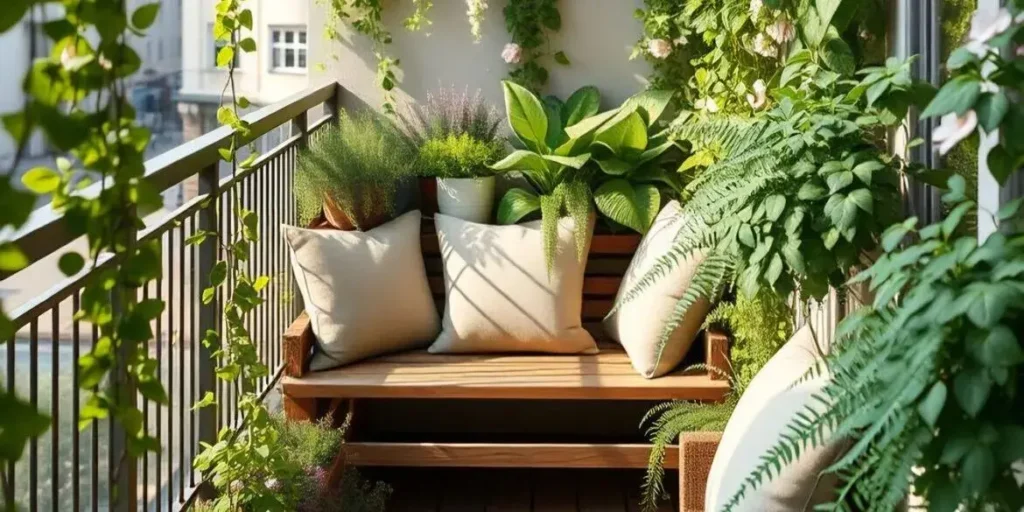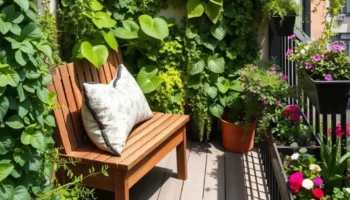A balcony garden is an innovative solution for urban dwellers who want to bring nature into their homes despite limited outdoor space. Whether you live in a bustling city or a small apartment, a balcony garden allows you to create a green oasis that fits into your lifestyle. By utilizing pots, containers, and vertical planters, you can transform even the smallest balcony into a thriving garden filled with herbs, flowers, vegetables, or succulents. This not only enhances the aesthetic appeal of your living space but also provides fresh air, a peaceful atmosphere, and the satisfaction of growing your own plants.
Balcony gardens are particularly popular in urban areas, where access to traditional gardening space may be limited. With the right selection of plants, proper lighting, and creative use of space, anyone can create a beautiful and functional garden in the confines of a balcony. Whether you are a seasoned gardener or a beginner looking to experiment with greenery, a balcony garden offers the perfect opportunity to cultivate a natural environment in a modern, compact setting.
What to need for a balcony garden?
Balcony gardens are ideal for those who want to enjoy gardening but lack a traditional backyard. Here are some common elements of a balcony garden.
- Containers or pots: Used to grow plants in limited space.
- Hanging baskets: To maximize vertical space.
- Vertical planters or trellises: Great for climbing plants or small vegetables.
- Herbs and small vegetables: Easy to grow in small spaces.
- Flowering plants: Add beauty and color to the area.
- Irrigation systems: Drip systems or self-watering pots may be used to manage watering in a confined area.
A balcony garden can create a green, peaceful oasis even in the middle of a busy city, offering fresh produce or flowers while enhancing the atmosphere of the space.

Suggestions for balcony gardens
Creating a balcony garden can be both fun and rewarding. Here are some suggestions to help you get started and make the most of your small outdoor space.
1. Choose the right plants
Consider your climate, the amount of sunlight your balcony receives, and the size of your space. Here are some plant suggestions based on light conditions.
- For sunny balconies (6+ hours of sunlight)
- Herbs: Basil, thyme, oregano, rosemary, mint.
- Vegetables: Cherry tomatoes, peppers, radishes, spinach, lettuce.
- Flowers: Marigolds, geraniums, petunias, lavender.
- For shady balconies (Less than 4 hours of sunlight)
- Herbs: Parsley, cilantro, chives.
- Vegetables: Leafy greens like kale, lettuce, arugula.
- Flowers: Begonias, impatiens, ferns, hostas.
2. Use vertical space
Maximize the use of limited balcony space by going vertical.
- Vertical gardens: Use wall-mounted or hanging planters, or a vertical frame with potted plants.
- Hanging baskets: Great for trailing plants like strawberries, nasturtiums, or ivy.
- Trellises: Perfect for climbing plants like beans, peas, or decorative vines.
3. Opt for compact and dwarf varieties
Many vegetables and fruit plants come in dwarf or compact varieties, which are ideal for small spaces. Consider the followings.
- Dwarf fruit trees: Citrus, apple, or fig trees in pots.
- Compact vegetable varieties: Baby tomatoes, mini peppers, patio eggplants.
4. Create a theme
- Herb garden: Grow culinary herbs like basil, thyme, cilantro, and mint.
- Flower garden: Focus on colorful flowers to brighten up the space.
- Edible garden: Grow vegetables, fruits, and edible flowers.
- Succulent garden: Perfect for low-maintenance care and modern aesthetics.
5. Choose the right containers
- Self-watering containers: Help manage watering needs, especially in hot or sunny areas.
- Grow bags: Lightweight and space-saving, ideal for vegetables like potatoes and peppers.
- Stackable planters: Great for small plants, herbs, and flowers, allowing vertical growth.
6. Consider lightweight furniture
If you have extra space, consider adding lightweight, foldable furniture like bistro tables or hanging chairs. This way, your balcony becomes a cozy space for relaxing amidst your plants.
7. Mind the weight
If you live in an apartment, it’s important to consider the weight limit of your balcony. Heavy pots and water can add substantial weight, so opt for lighter materials like plastic or fiberglass pots, and avoid overloading the area.
8. Incorporate a watering system
Balconies can get very hot, especially in the summer. To keep your garden thriving, consider:
- Self-watering planters: These keep the soil moist and reduce the need for frequent watering.
- Drip irrigation: A simple system that delivers water directly to each plant.
9. Add lighting for night appeal
- Solar lights: Great for illuminating your plants and seating area at night without wiring.
- String lights: Hang them around the perimeter of the balcony for a cozy ambiance.
10. Plant companion gardening
Use companion planting to maximize space and encourage healthier growth. For example:
- Tomatoes and basil: They grow well together and benefit each other.
- Marigolds: Repel pests and can be planted alongside vegetables.
A well-planned balcony garden not only enhances your living space but also provides fresh produce and an inviting, green retreat. Moreover, a balcony garden is a wonderful way to embrace gardening, even in the smallest of spaces. It allows you to cultivate a variety of plants, from herbs and vegetables to flowers and succulents, bringing life and color to your urban home. Whether you are looking to grow fresh produce or simply add some greenery to your surroundings, a balcony garden is an accessible and rewarding way to connect with nature.



